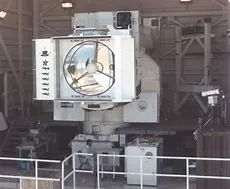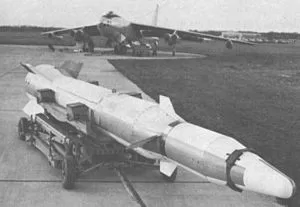The discussion on Episode 33 of The Whole Magazine led to some very hot debates. In this recap we are discussing the efficacy and problems of ground based anti-satellite laser systems.
The United States is one of the leading nations in military technology. Simply put very few nations come close to what the United States’ weapon systems can achieve. As a whole the United States military is extremely reliant on satellite communication to carry out missions. This is not news to our adversaries like Russia and China.
With our enemies aware of our dependency on these satellite based communications, Russia and China are committing vasts amounts of research and development into anti-satellite technology. As one of the chief objectives when confronting your enemy is to block or hinder their ability to communicate.
A small sample of the United States’ laser weapon capability
MIRACL
Developed in the mid 1970s the MIRACL (Mid Infra Red Advanced Chemical Laser) was intended for the Navy. This laser system used deuterium fluoride with a power output of 2.2 MW. Becoming the highest power chemical laser in the western hemisphere. It had the capability of creating a CW (continuous wave) for 70 seconds. The beam at exit was reshaped to be a 14 × 14 cm square.

This weapon system was used to destroy a short-range Katyusha rocket using only a fraction of its total power output.
Not only that, but it was able to engage five BQM_34 drones and a supersonic Vandal missile at tactically significant ranges.
The final test resulted in the MIRACL being slightly damaged twice during tests against the Air Force’s Miniature Sensor Technology Integration (MSTI-3) satellite in October 1997. It successfully blinded the satellite, and it is reported that if given more power it could have successfully destroyed the satellite.
USPL
The United States Army is building a more powerful laser weapon amid the rising global tension in preparation for the future battlefield, space. The USPL (Ultra Short Pulsed Laser) which supposedly closed its application date in early 2020, utilizes diode and fiber laser technology which allow for more ruggedized systems to be deployed on the land and sea. The Army’s intent is to prepare for an ever-changing battlefield.
This weapon system is poised to be the most powerful laser outside a major facility. It is accomplishing this by using pulse laser technology. Unlike the MIRACL where it was able to produce a continuous wave (CW) this laser system will be operating with pulse widths of femtoseconds. This provides incredible tactical capabilities because of their ability to pack a massive amount of energy into those short pulses.
Unlike the CW laser weapons which just aim to melt the target, the USPL and other pulsed weapon systems destroy or disable targets in three different methods. “Ablation of material, blinding of sensors, and the creation of localized electronic interference in order to overload target’s electrical systems.”
The propagation from this weapon system has also more advantages. The energy intensity in this terawatt pulse laser is able to create a self focusing filament. Which allows these pulses to travel without diffraction negating issues while traveling through atmosphere.
The target power for this laser weapon system is 5 TW. This weapon system would have an output power 2,000 times that of the MIRACL. The target repetition rate of this weapon system is 50 Hz.
The Adversary’s Supposed Laser Weapon Technology
In recent Google Earth images a space surveillance facility in Russia appears to be operational now. This new satellite dazzler is called Kalina. Residing in Russia’s Ministry of Defense’s Krona space surveillance complex, this new dazzler will join another laser dazzler known as Peresvet that has been operating since 2019.
From all accounts our near peer adversaries seem to be only capable of blinding satellites. If you want more information about the facilities at Krona then I suggest you go here.
How else do you combat satellites?
There are multiple different avenues to go down when discussing anti-satellite warfare. You either damage or interfere to a satellite. Though I guess damaging would be the most extreme case of interference.
In the damaging regime, weapon systems like kinetic attacks and maybe in the near future for the United States, lasers. However, the deployment of these anti-satellite systems look very different from one another.
Anti-satellite missiles have been made and tested in the past. In the Cold War era when Sputnik 1 was launched in 1957 the United States, fearing nuclear armed satellite networks, launched their first ASAT. It was an air launched ballistic missile called Bold Orion.

The Soviet response was their own ASAT known as co-orbitals. Their goal was to fly alongside satellites and exploding nearby. China entered the ASAT race in 2007, destroying an old weather satellite with a ballistic missile. These tests have corresponded to an increased amount of debris in space. In 2022 the US was the first country to ban the use of missiles against satellites.
The non-kinetic types are through jamming and blinding using lasers. It may be within the next few years we see a new United States laser system designed to destroy satellites.
A situation in which you can stop enemy satellite communication
Utilizing ground based laser weaponry deployed on ground units or sea units, interfere and ultimately jam communications to geosynchronous satellites. Effectively eliminating any meaningful data the satellite might have been able to scrounge up in the mess. Deploy LEO and MEO kinetic kill vehicles which will take out lower altitude satellites. In the case of systems like Starlink, hopefully you get some snow ball effects from the first couple of satellites being destroyed. Resulting in the further degradation and destruction of other satellites in LEO and MEO. Though be warned, debris wouldn’t discriminate from your own satellites. Employing a system like this is within the realm of possibility for our near peer adversaries.
Closing thoughts
With Gen Saltzman, Chief of Space Operations for the Space Force, sharing his concern to congress about the possibility of our adversaries developing anti-satellite weapons it is fair to assume this is definitely something to consider.
There are backups to satellite communication that are used in tandem.
The future of ASAT laser weapons seems bright for the United States. Russian or Chinese laser weapon capabilities capable of destroying or disabling satellites (permanently) is speculative.
With the capabilities of the USPL system that the Army is developing it could be possible that a laser weapon system is capable of touching distant satellites. Practical testing is of course necessary.



